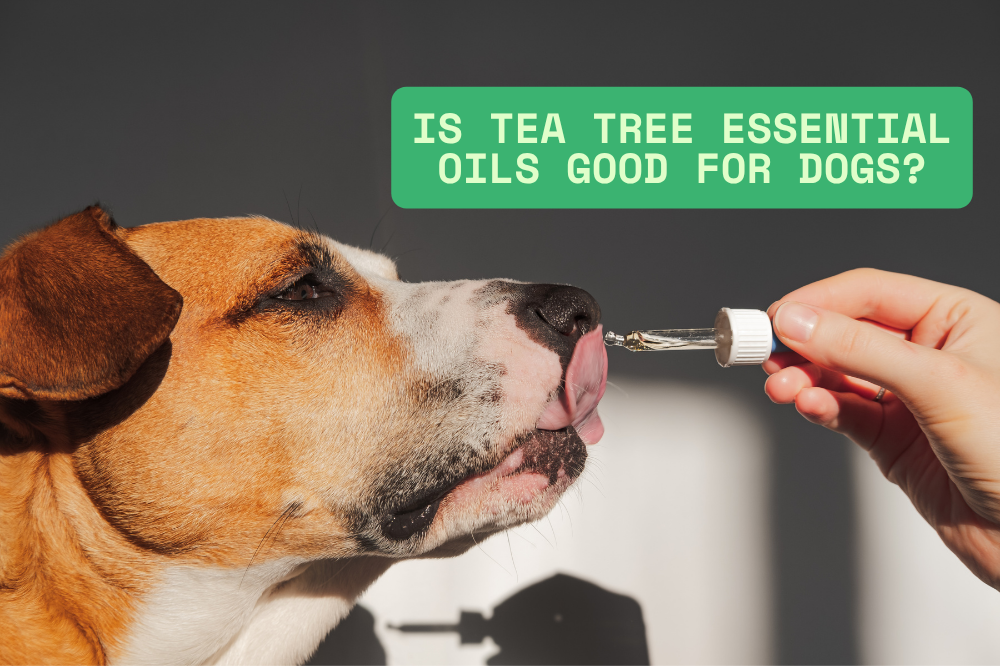
Is Tea Tree Oil Safe for Dogs?
Share
Spoiler: Not really. And here’s why you should be careful.
A few years ago, I was deep in my “DIY everything” phase — homemade candles, all-natural surface sprays, even flea shampoos made from essential oils. Pinterest convinced me that I could detox my whole house with three mason jars and a bottle of tea tree oil.
Then came the wake-up call.
I’d added a few drops of tea tree oil to a bucket of mop water and cleaned the floors. Later that evening, my dog Milo — curious as ever — gave the freshly mopped tiles a few good licks. Within an hour, he was trembling, drooling, and barely responding.
I’ll never forget the panic in my chest as I rushed him to the emergency vet. The diagnosis? Tea tree oil toxicity.
🌿 Tea Tree Oil: Natural, Yes. Safe for Dogs? Not So Much.
Tea tree oil (also called melaleuca) is a popular essential oil known for its antibacterial and antifungal properties. For humans, it’s kind of a miracle worker. People dab it on blemishes, use it in scalp treatments, even clean kitchen counters with it.
But for dogs? It’s a whole different story.
Tea tree oil contains compounds called terpenes, which can be extremely hard on a dog’s liver and nervous system. The scary part? It doesn’t take much — even small amounts can cause serious reactions.
🚨 Symptoms of Tea Tree Oil Toxicity in Dogs
If your dog has been exposed — whether by skin contact, licking, or inhaling — you might notice symptoms like:
- Muscle tremors
- Drooling
- Weakness or lethargy
- Vomiting
- Loss of coordination
- Collapse or seizures (in extreme cases)
And here’s the kicker: these symptoms can appear even if the oil was only used topically.
Dogs absorb substances through their skin, and tea tree oil gets into their bloodstream fast. That homemade flea spray you thought was gentle? It could land your pup in the ER.
❌ Common Mistakes Dog Owners Make with Tea Tree Oil
You might think, “I’ve seen pet shampoos with tea tree oil — how can it be so bad?”
Fair question. The answer comes down to concentration and formulation.
Commercial pet products that contain tea tree oil typically use extremely diluted concentrations — often less than 0.1% — and they’ve gone through testing. But that little brown bottle you bought online? It’s usually 100% pure, and that’s where things get dangerous.
Other common missteps:
- Adding tea tree oil to homemade grooming sprays or paw balms
- Diffusing it in small spaces with poor ventilation
- Cleaning floors or counters with tea tree oil where dogs walk or lick
- Applying it to hot spots or wounds “to keep them clean” (don't!)
🐶 Real Talk: Is There Ever a Safe Way to Use It?
Technically, yes — with extreme dilution and veterinary guidance. But here’s my honest opinion as a dog parent:
There are safer alternatives. Why take the risk?
If your goal is flea control, odor management, or calming your dog, there are gentler, pet-approved options that don’t come with a toxicity warning.
You wouldn’t leave chocolate or grapes on the floor, right? Think of tea tree oil the same way — one of those “great for people, risky for pups” things.
🌱 Safer Essential Oils for Dog-Friendly Homes
If you love a fresh-smelling house and still want to use aromatherapy responsibly, here are a few oils that are generally considered safe (in small doses and proper use):
- Chamomile – calming, great before thunderstorms or car rides
- Frankincense – grounding, gentle scent that’s rarely reactiveCedarwood (Virginian) – naturally repels insects, has a dry, woodsy aroma
- Lavender – yes, with limits (we wrote a whole post on that one!)
As always, diffuse in moderation and keep your dog’s reactions in mind. If they leave the room when you turn on the diffuser, listen to them. Their nose knows.
